Lucy O’Sullivan reveals that getting a well-executed shot with a release aid is less a matter of fine hand control, and more a question of activating the right muscles in your back

Types of trigger
There are so many different types of triggers out there, where does a compound archer even begin? The main types shot are often:
Finger release – strapped around your wrist and shot with your index finger
Thumb release – held in the hand and shot with your thumb
Hinge Back Tension – held in the hand and shot by relaxing the hand in a rotational movement
Pressure Back Tension – held in the hand and shot by adding pressure to the hand
My pet peeve in archery is hearing a coach shout out “strong shot” to an archer after they have shot. What does that even mean? There are so many different parts to a shot that in this article I will only focus on shooting a trigger, or back tension release ‘strong’. For the purposes of this article, I am going to change the word ‘strong’ to ‘well executed’.
Triggers
The main types of triggers rely on two things; a good anchor, and an activation of the rotator cuff muscles and trapezius muscles to create what’s known as ‘back tension’ for the release aid to go off.
The ‘back tension’ movement in archery uses the following muscles and muscle groups:
Rhomboids, to create tension and retract and pull the shoulder blades (the wing-bone part of your back) towards the spine.
Another muscle which helps pull the shoulder blade inwards (but also upwards toward the base of the neck) is the levator scapulae.
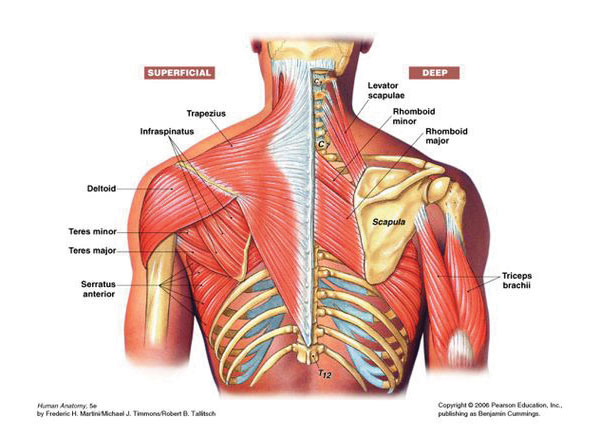
Understanding and thinking about what muscles you are using can really aid your training
The other meaty muscle group that helps the scapula are the upper, middle and lower trapezius. Depending on which muscle you use the trapezius can pull the shoulder blade upward (upper) inward (middle) and downward (lower). So dependent on which muscle you tense at full draw your shoulder blade will react the same way.
For archery you want to activate the middle and lower trapezius to create that well executed shot, as well as using the rhomboids and the levator scapulae.
A great way to think of the back tension shot is by placing something between your shoulder blades and squeezing the object, about the size of an orange, and hold it there.
Try doing this for at least five seconds, and increasing the time you hold the object every day. Another technique some of the greats use is by pulling back a cliniband and holding the band in the full draw position. Then you get a friend to try and pull the band forward away from the shooter’s draw hand, and try to stop your elbow from falling forward, holding that full draw position without moving.
How to make a well executed shot?
In order to activate the back tension muscles in your draw arm, you must also ensure that the bow arm is set into a strong position. Muscles involved in this include the latissimus dorsi and the deltoids, as well as a host of other muscles including the rotator cuff muscles.
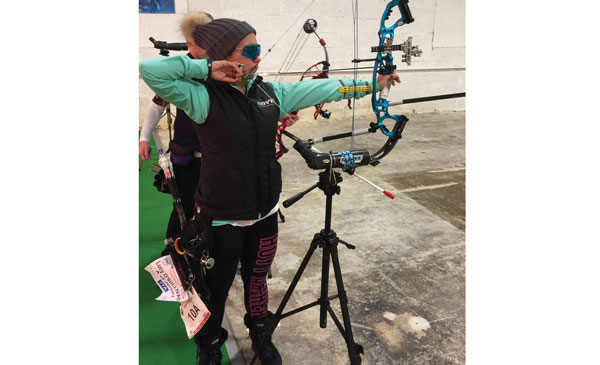
A good, well-executed shot comes from the back – not the hand
A great way to work these muscles at home is by holding out a can of beans, for example, and keeping the shoulder down away from the ear, using your lats to keep the arm steady. Think about tensing your ribs under the raised arm to help hold your position.
You can also do exercises such as lat pull downs, or pull-ups, in the gym to make sure that the shoulder is rock solid at full draw.
When at full draw it is vital that you and your bow are as still as possible. Therefore, all the forces need to be in perfect balance.
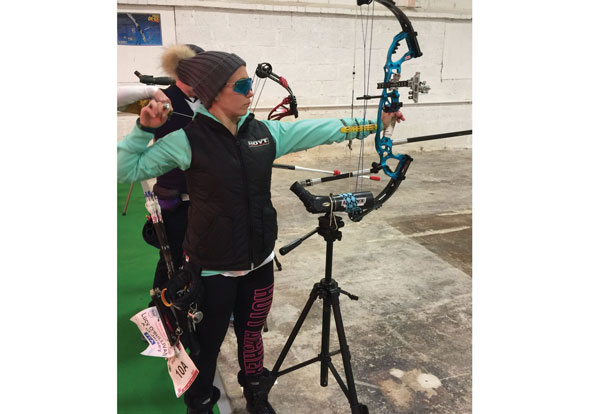
A steady front arm resists sight movement as you execute
If you are 80 per cent (slack) on your bow arm and are trying to pull 100 per cent pressure through the draw arm (back tension) have a look what happens to your sight – the aim will be moving in every direction. But if you have 100 per cent relaxed pressure through the bow arm forwards towards the target, using those meaty latissimus dorsi muscles, you can then load your back muscles equally to 100 per cent and the shot can be executed perfectly without the sight moving around everywhere.
What has helped me…
As many of you may be aware, I only shoot back tension release aids. I can shoot a trigger release aid, but I find that to get that well-executed shot every single time without the option of just ‘punching’ the trigger, back tension release aids do that for me. I don’t need to think about my thumb, just my shoulder blades and squeezing an imaginary orange between them.
I am a fan of pressure back tension release aids that rely on adding lots of pressure to your back to enable the release aid to go off, but as I mentioned before; if your bow arm is not steady enough you can find your aim can be badly effected.
Recently I have been shooting a hinge back tension release aid called the Honey Badger Claw by TRU Ball. I think it is an awesome release aid, and it has really made me think about which muscles I am using while I shoot. This is not just because I can have a more relaxed bow arm with the same amount of pressure, but because the HBC works in a more rotational movement the muscles are able to work more naturally than just requiring brute force for the release aid to go off.
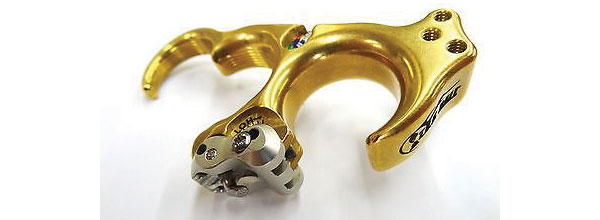
The Honey Badger Claw by TRU Ball
How to perfect your shot
Whichever release aid you are shooting, whether it be a back tension or a trigger release aid, they are all capable of working as well as each other.
With the trigger release aids the same principles apply. You must put your thumb or finger on the trigger and wait for the back muscles to do all of the hard work. The activation and movement of the back will enable the trigger to be released, as the pressure on the arm makes the thumb release go off. Common bad form is to slam your thumb on the trigger. Avoid this if you really want that back to work, and to have longevity in the sport. It is the same principle with the back tension releases, they will not go off unless adequate pressure is being put through those rhomboids and mid/lower trapezius muscles.
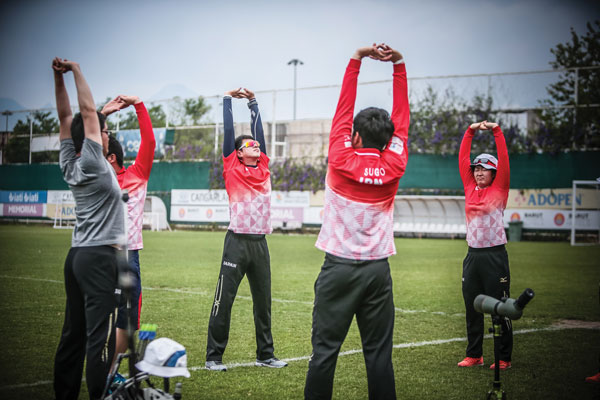
Make sure you are keeping your shoulders and back in tip-top shape with some simple exercise
Whatever release aid works for you, just practice that well-executed shot by starting on blank boss targets, and trying things such as closing your eyes while you shoot from 5m away. Feel the shot. Feel what muscles are working and practice on squeezing an imaginary orange between your shoulder blades. Then when you have done enough blank boss training you can start working further away or on target faces.
Longevity in the muscles comes from using them correctly. Know what a well-executed shot feels like (equal push forward with the bow arm using the lats, and pull with the rhomboids and traps squeezing the back) and try to replicate this every single time you shoot.
This article originally appeared in the issue 115 of Bow International magazine. For more great content like this, subscribe today at our secure online store www.myfavouritemagazines.co.uk

